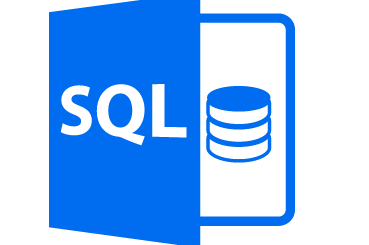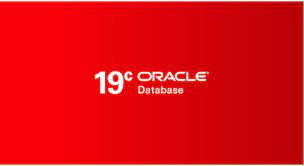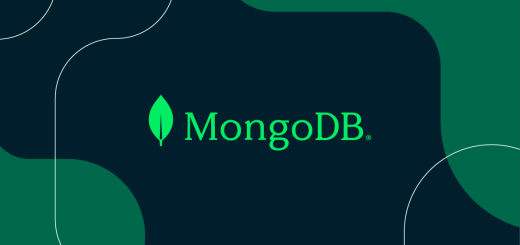Mastering the Unattended Oracle Install: A Guide to Silent Oracle 19c Client Installation
The Unattended Oracle Install is a powerful tool for streamlining Oracle 19c Client installations, especially in scenarios where you need to automate the process or work with cloud-based environments. This guide provides a step-by-step walkthrough of a silent installation on a CIS-hardened Red Hat Enterprise Linux 8 image.

If you want to install Oracle on Linux using the GUI – click here.
Prerequisites and Preparation
- System Requirements: Ensure your Red Hat Enterprise Linux 8 system meets the minimum hardware and software requirements for Oracle 19c Client. Refer to the official Oracle documentation for details.
- CIS Hardening: If your system is CIS-hardened, you may need to temporarily adjust some security settings to allow the installation to proceed smoothly. Document these changes and revert them after the installation is complete.
- User Accounts: Create the necessary user accounts (e.g.,
oracle) and groups (e.g.,oinstall,dba) before starting the installation. - Network Connectivity: Ensure your system has network connectivity to download the Oracle software and access any required repositories.
Step 1 – Download the Oracle 19c Client Software:
System Requirements: Before downloading, confirm that your target system meets the necessary hardware and software requirements for Oracle 19c Client. Check the official Oracle documentation for details.
Version and Edition: Determine the appropriate version (32-bit or 64-bit) and edition (Standard, Enterprise, etc.) of the Oracle 19c Client based on your operating system and application needs.
Navigate to the Oracle Technology Network or Oracle Cloud to download the Oracle 19c Client software.
You can download the Oracle 19c Client directly from Oracle.
- Access Oracle Website: Go to the Oracle Technology Network (OTN) or Oracle Cloud.
- Navigate to Downloads: Locate and click on the “Downloads” section.
- Find Oracle 19c Client: Search for and select “Oracle 19c Client”.
- Choose the Right File: Select the download link that matches your desired version and edition.
- Accept License Agreement: Read and accept Oracle’s license agreement.
- Start Download: Click the download button and choose a suitable save location with enough disk space.
- Monitor Progress: Wait for the download to complete.
Step 2 – Transfer the Software:
If you downloaded the Oracle 19c Client software on a different machine, you’ll need to transfer it to your AWS instance. Here are two common methods:
Method 1: Using Amazon S3 (Recommended for larger files or frequent transfers)
1) On the Source Machine (where you downloaded the software):
- Install AWS CLI: If not already installed, install the AWS Command Line Interface.
- Configure AWS CLI: Run
aws configureand provide your AWS access key, secret key, default region, and output format. - Prepare S3 Bucket: Create an S3 bucket or use an existing one. Ideally, the bucket should be in the same region as your AWS instance for faster transfers.
- Upload to S3: Use the following command to upload the software:
aws s3 cp /path/to/oracle_19c_client.zip s3://your-bucket-name/2) On the AWS Instance (target server):
- Install AWS CLI: If not already installed, install the AWS CLI.
- Configure AWS CLI: Run
aws configureand provide your AWS credentials. - Download from S3: Use the following command to download the software:
aws s3 cp s3://your-bucket-name/oracle_19c_client.zip /path/on/instance/Using SCP (Secure Copy Protocol):
Method 2: Using SCP (Secure Copy Protocol)
- Prerequisites:
- SSH Access: Ensure you have SSH access to your AWS instance.
- Private Key: Locate the private key (
.pemfile) associated with your instance.
- Transfer using SCP:
- On the Source Machine: Run the following command, replacing placeholders with your actual information
scp -i /path/to/your-key.pem /path/to/oracle_19c_client.zip ec2-user@your-aws-instance-ip:/path/on/instance/ Important Notes:
- Security: Ensure that your AWS credentials and private key are stored securely.
- Replace Placeholders: In the commands above, replace placeholders like
/path/to/...,your-bucket-name,your-aws-instance-public-ip, and/path/on/instance/with your actual paths, bucket name, instance’s public IP address, and desired destination directory on the instance, respectively.
Usernames:
- For Amazon Linux 2 or later, the default username is
ec2-user. - For older Amazon Linux AMIs or other Linux distributions, the username might be different (e.g.,
ubuntu,centos). Check your instance’s documentation if unsure.
Step 3 – Unzip the Software:
Before you can unzip the software, ensure you know the exact location where you’ve transferred the Oracle 19c Client software on your AWS instance. This could be a directory you specified during the transfer or a default directory based on the transfer method used.
unzip oracle_19c_client.zip -d /path/to/directoryStep 4 – Navigate to the Client Installation Directory:
cd /path/to/directory/clientStep 5 – Create and Modify a Response File for the Unattended Oracle Install:
- The unattended installation requires a response file. This file contains all the inputs that the installer would typically ask for during an interactive installation.
- You can use the sample response file provided in the installation directory and modify it as per your requirements.
cp response_file_sample.rsp my_response_file.rsp vi my_response_file.rspModify the Response File:
- Open the Unattended Oracle Install response file in an editor and modify the parameters as required. Some of the important parameters include:
ORACLE_HOSTNAME: Your server’s hostname.UNIX_GROUP_NAME: OS group, typicallydbaoroinstall.INVENTORY_LOCATION: Location for Oracle Inventory, typically/u01/app/oraInventory.ORACLE_HOME: Path where the client should be installed, e.g.,/u01/app/oracle/client19c.ORACLE_BASE: Base directory for Oracle, e.g.,/u01/app/oracle.- … and other parameters as per your environment and requirements.
Below is an example of a modified response file for the Oracle 19c Client installation. Please note that this is a simplified version, and the actual response file may contain more parameters:
[GENERAL]
# The response file version. Do not modify.
RESPONSEFILE_VERSION=19.0
[CLIENT]
# The Oracle home location. This is where the client software will be installed.
ORACLE_HOME=/u01/app/oracle/client19c
# The Oracle base location. This is the base directory for Oracle software installations.
ORACLE_BASE=/u01/app/oracle
# Specifies whether to install the software only or the software and configure the client.
INSTALL_TYPE= "Administrator"
# The Unix group to be set for the inventory directory.
UNIX_GROUP_NAME=oinstall
# The location of the central inventory.
INVENTORY_LOCATION=/u01/app/oraInventory
# The language for the Oracle software. This is the language in which the software will run.
LANGUAGES=en
# The name of the Oracle home user.
ORACLE_HOME_USER=oracle
# The list of components you want to install.
SELECTED_LANGUAGES=en
# The location of the Oracle installation log files.
LOG_LOCATION=/u01/app/oracle/logs
# The location of the Oracle installation log file.
LOG_FILE=/u01/app/oracle/logs/client_install.log
# Decline security updates.
DECLINE_SECURITY_UPDATES=true
# Do not prompt for the My Oracle Support password.
MYORACLESUPPORT_USERNAME=
MYORACLESUPPORT_PASSWORD=<SECURE_VALUE>
# Do not use proxy for Oracle updates.
PROXY_HOST=
PROXY_PORT=
PROXY_USER=
PROXY_PWD=<SECURE_VALUE>
PROXY_REALM=
# The email address for security updates.
EMAIL_ADDRESS=
EMAIL_ADDRESS_CONFIRM=
# The Oracle support password.
ORACLE_SUPPORT_PASSWORD=<SECURE_VALUE>
# The Oracle support hub URL.
ORACLE_SUPPORT_HUB_URL=
Step 6 – Run the Unattended Oracle Install with the Response File:
Permissions:
- User Permissions: Ensure the user running the installation (typically
oracleor another designated user) has:- Execute Permission: on the
runInstallerbinary - Read Permission: on the response file
- Write Permission: to the installation directory (
ORACLE_HOME) and any log directories specified in the response file.
- Execute Permission: on the
- Verification: Use
ls -lto check file permissions and ownership. If needed, adjust them usingchmodandchown.
Locate the Installer:
- Navigate to
clientDirectory: Ensure you’re in theclientdirectory within the extracted Oracle 19c Client software. runInstallerBinary: TherunInstallerbinary is typically located in this directory.
Execute the Installation:
Command: Run the following command, replacing the placeholder with the actual path to your response file:
./runInstaller -silent -responseFile /path/to/my_response_file.rspMonitor Progress & Address Issues:
- Silent Installation: The installation will run in the background without a graphical interface.
- Terminal Output: Monitor the terminal output for any progress messages, errors, or warnings.
- Log File (Optional): If you specified a
LOG_LOCATIONin your response file, you can tail the log file for real-time monitoring:
tail -f /path/to/log_location/client_install.log- Troubleshooting: If errors occur, carefully read the error messages and take corrective action:
- Response File: Review and adjust parameters in the response file if needed.
- Disk Space: Ensure sufficient disk space is available in the installation directory and any log directories.
- Permissions: Double-check permissions if you encounter access-related errors.
Complete Installation:
- Root Scripts: If prompted, the installer will provide paths to scripts that need to be run as the
rootuser to finalize the installation. Make a note of these paths.
Step 7 – Run the Root Scripts:
Understand the Purpose:
- After the Oracle 19c Client installation, certain scripts need to be executed as the root user. These scripts set the appropriate permissions, initialize certain configurations, and perform other necessary post-installation tasks.
Locate the Scripts:
- At the end of the silent installation process, the installer will typically display a message indicating the exact paths to the root scripts that need to be executed. Make a note of these paths.
Switch to the Root User:
- Before you can run the root scripts, you need to switch to the root user. If you’re currently logged in as the
oracleuser or another non-root user, you can switch to the root user using the following command:bash
sudo su -Execute the Scripts:
- Navigate to the directory where the root scripts are located and execute them. Typically, the script is named
orainstRoot.shand might be accompanied by other scripts. Run them in the order specified by the installer. For example
/u01/app/oraInventory/orainstRoot.shMonitor the Script Execution:
- As the scripts run, they may display messages indicating the tasks they’re performing. Monitor these messages for any errors or warnings. If any issues arise, address them based on the feedback provided.
Return to Your Original User:
- Once you’ve executed all the necessary root scripts, it’s a good practice to exit the root user session and return to your original user (e.g.,
oracle). Simply typeexitand press Enter:
exitVerify the Changes:
- After running the root scripts, you can verify that the necessary configurations have been applied. For instance, check if the appropriate permissions have been set on the Oracle directories and if any environment variables or system configurations have been updated.
- After the installation is complete, you’ll need to run some scripts as the root user. The installer will provide the exact paths. Typically, it is:
That’s it. You now know all about the Unattended Oracle Install application. It’s a great tool for scripting cloud installations of immutable objects.
Thanks for taking the time to read this article. if you have any questions or feedback, please write in the comment section below




2 Responses
[…] Are you looking for an unattended installation procedure? Check our other documentation here. […]
[…] is an open-source, relational database management system (RDBMS) based on the structured query language (SQL). MySQL is available on all major operating […]